Finding Value in Wastewaters from the Cork Industry: Carbon Dots Synthesis and Fluorescence for Hemeprotein Detection
Abstract
:1. Introduction
2. Results and Discussion
2.1. Characterisation of C-Dots
2.2. Photophysical Properties
2.3. Detection of Hemeproteins
2.4. Understanding the Sensitivity of C-Dots toward Hemeproteins
3. Materials and Methods
3.1. Materials
3.2. Procedure for the Synthesis of C-Dots from Cork Industry Wastewater
3.3. Procedure for the Synthesis of C-Dots from Citric Acid
3.4. Instruments and Methods
4. Conclusions
5. Patents
Supplementary Materials
Author Contributions
Funding
Acknowledgments
Conflicts of Interest
References and Notes
- Miao, P.; Han, K.; Tang, Y.; Wang, B.; Lin, T.; Cheng, W. Recent advances in carbon nanodots: Synthesis, properties and biomedical applications. Nanoscale 2015, 7, 1586–1595. [Google Scholar] [CrossRef]
- Geng, X.; Sun, Y.; Li, Z.; Yang, R.; Zhao, Y.; Guo, Y.; Xu, J.; Li, F.; Wang, Y.; Lu, S.; et al. Retrosynthesis of Tunable Fluorescent Carbon Dots for Precise Long-Term Mitochondrial Tracking. Small 2019, 15, 1901517. [Google Scholar] [CrossRef]
- Liu, H.; Sun, Y.; Li, Z.; Yang, J.; Aryee, A.A.; Qu, L.; Du, D.; Lin, Y. Lysosome-targeted carbon dots for ratiometric imaging of formaldehyde in living cells. Nanoscale 2019, 11, 8458–8463. [Google Scholar] [CrossRef]
- Dong, Y.; Cai, J.; You, X.; Chi, Y. Sensing applications of luminescent carbon based dots. Analyst 2015, 140, 7468–7486. [Google Scholar] [CrossRef]
- Sun, X.; Lei, Y. Fluorescent carbon dots and their sensing applications. Trends Anal. Chem. 2017, 89, 163–180. [Google Scholar] [CrossRef]
- Li, H.; Liu, R.; Lian, S.; Liu, Y.; Huang, H.; Kang, Z. Near-infrared light controlled photocatalytic activity of carbon quantum dots for highly selective oxidation reaction. Nanoscale 2013, 5, 3289–3297. [Google Scholar] [CrossRef]
- Li, H.; He, X.; Kang, Z.; Huang, H.; Liu, Y.; Liu, J.; Lian, S.; Tsang, C.H.A.; Yang, X.B.; Lee, S.-T. Water-Soluble Fluorescent Carbon Quantum Dots and Photocatalyst Design. Angew. Chem. Int. Ed. 2010, 49, 4430–4434. [Google Scholar] [CrossRef]
- Zuo, P.; Lu, X.; Sun, Z.; Guo, Y.; He, H. A review on syntheses, properties, characterization and bioanalytical applications of fluorescent carbon dots. Microchim. Acta 2016, 183, 519–542. [Google Scholar] [CrossRef]
- Lim, S.Y.; Shen, W.; Gao, Z. Carbon quantum dots and their applications. Chem. Soc. Rev. 2015, 44, 362–381. [Google Scholar] [CrossRef] [PubMed]
- Roy, P.; Chen, P.-C.; Periasamy, A.P.; Chen, Y.-N.; Chang, H.-T. Photoluminescent carbon nanodots: Synthesis, physicochemical properties and analytical applications. Mater. Today 2015, 18, 447–458. [Google Scholar] [CrossRef]
- Deng, J.; You, Y.; Sahajwalla, V.; Joshi, R. Transforming waste into carbon-based nanomaterials. Carbon 2016, 96, 105–115. [Google Scholar] [CrossRef]
- Sharma, V.; Tiwari, P.; Mobin, S.M. Sustainable carbon-dots: Recent advances in green carbon dots for sensing and bioimaging. J. Mater. Chem. B 2017, 5, 8904–8924. [Google Scholar] [CrossRef] [PubMed]
- Wei, J.; Zhang, X.; Sheng, Y.; Shen, J.; Huang, P.; Guo, S.; Pan, J.; Liu, B.; Feng, B. Simple one-step synthesis of water-soluble fluorescent carbon dots from waste paper. New. J. Chem. 2014, 38, 906–909. [Google Scholar] [CrossRef]
- Hu, Y.; Yang, J.; Tian, J.; Jia, L.; Yu, J.-S. Waste frying oil as a precursor for one-step synthesis of sulfur-doped carbon dots with pH-sensitive photoluminescence. Carbon 2014, 7, 775–782. [Google Scholar] [CrossRef]
- Sousa, D.A.; Costa, A.I.; Alexandre, M.R.; Prata, J.V. How an environmental issue could turn into useful high-valued products: The olive mill wastewater case. Sci. Total Environ. 2019, 647, 1097–1105. [Google Scholar] [CrossRef]
- Pereira, H. Cork: Biology, Production and Uses; Elsevier: Amsterdam, The Netherlands, 2007; pp. 55–99. [Google Scholar]
- Rocha, S.M.; Coimbra, M.A.; Delgadillo, I. Demonstration of Pectic Polysaccharides in Cork Cell Wall from Quercus suber L. J. Agric. Food. Chem. 2000, 48, 2003–2007. [Google Scholar] [CrossRef]
- Dias-Machado, M.; Madeira, L.M.; Nogales, B.; Nunes, O.C.; Manaia, C.M. Treatment of cork boiling wastewater using chemical oxidation and biodegradation. Chemosphere 2006, 64, 455–461. [Google Scholar] [CrossRef]
- APCOR Yearbook 2018/2019. Available online: https://www.apcor.pt/en/portfolio-posts/anuario-1819/ (accessed on 28 February 2020).
- Minhalma, M.; Pinho, M.N. Flocculation/Flotation/Ultrafiltration Integrated Process for the Treatment of Cork Processing Wastewaters. Environ. Sci. Technol. 2001, 35, 4916–4921. [Google Scholar] [CrossRef]
- Peres, J.A.; Heredia, J.B.; Domínguez, J.R. Integrated Fenton’s reagent-coagulation/flocculation process for the treatment of cork processing wastewaters. J. Hazard. Mater. B 2004, 107, 115–121. [Google Scholar] [CrossRef]
- Heredia, J.B.; Domínguez, J.R.; López, R. Treatment of Cork Process Wastewater by a Successive Chemical−Physical Method. J. Agric. Food. Chem. 2004, 52, 4501–4507. [Google Scholar] [CrossRef]
- Teixeira, A.R.S.; Santos, J.L.C.; Crespo, J.G. Sustainable membrane-based process for valorisation of cork boiling wastewaters. Sep. Purif. Technol. 2009, 66, 35–44. [Google Scholar] [CrossRef]
- Bernardo, M.; Santos, A.; Cantinho, P.; Minhalma, M. Cork industry wastewater partition by ultra/nanofiltration: A biodegradation and valorisation study. Water Res. 2011, 45, 904–912. [Google Scholar] [CrossRef] [PubMed] [Green Version]
- Gomes, A.C.; Silva, L.; Simões, R.; Canto, N.; Albuquerque, A. Toxicity reduction and biodegradability enhancement of cork processing wastewaters by ozonation. Water Sci. Technol. 2013, 68, 2214–2219. [Google Scholar] [CrossRef] [PubMed]
- Torres-Socías, E.D.; Fernández-Calderero, I.; Oller, I.; Trinidad-Lozano, M.J.; Yuste, F.J.; Malato, S. Cork boiling wastewater treatment at pilot plant scale: Comparison of solar photo-Fenton and ozone (O3, O3/H2O2). Toxicity and biodegradability assessment. Chem. Eng. J. 2013, 234, 232–239. [Google Scholar] [CrossRef]
- Ponce-Robles, L.; Miralles-Cuevas, S.; Oller, I.; Agüera, A.; Trinidad-Lozano, M.J.; Yuste, F.J.; Malato, S. Cork boiling wastewater treatment and reuse through combination of advanced oxidation technologies. Environ. Sci. Pollut. Res. 2017, 24, 6317–6328. [Google Scholar] [CrossRef]
- Ge, X.; Wu, Z.; Cravotto, G.; Manzolia, M.; Cintas, P.; Wu, Z. Cork wastewater purification in a cooperative flocculation/adsorption process with microwave-regenerated activated carbon. J. Hazard. Mater. 2018, 360, 412–419. [Google Scholar] [CrossRef]
- Prata, J.V.; Alexandre, M.R.; Costa, A.I. Process for Producing Luminescent Carbon Nanomaterials from Cork Industry Wastewater. Portuguese Patent Application N° 109379, 10 May 2016. [Google Scholar]
- Wang, C.-I.; Wu, W.-C.; Periasamy, A.P.; Chang, H.-T. Electrochemical synthesis of photoluminescent carbon nanodots from glycine for highly sensitive detection of haemoglobin. Green Chem. 2014, 16, 2509–2514. [Google Scholar] [CrossRef]
- Huang, S.; Wang, L.; Huang, C.; Xie, J.; Su, W.; Sheng, J.; Xiao, Q. A carbon dots based fluorescent probe for selective and sensitive detection of haemoglobin. Sens. Actuators B 2015, 221, 1215–1222. [Google Scholar] [CrossRef]
- Barati, A.; Shamsipur, M.; Abdollahi, H. Hemoglobin detection using carbon dots as a fluorescence probe. Biosens. Bioelectron. 2015, 71, 470–475. [Google Scholar] [CrossRef]
- Huang, S.; Yang, E.; Liu, Y.; Yao, J.; Su, W.; Xiao, Q. Low-temperature rapid synthesis of nitrogen and phosphorus dual-doped carbon dots for multicolor cellular imaging and hemoglobin probing in human blood. Sens. Actuators B 2018, 265, 326–334. [Google Scholar] [CrossRef]
- Lv, P.; Xie, D.; Zhang, Z. Magnetic carbon dots based molecularly imprinted polymers for fluorescent detection of bovine haemoglobin. Talanta 2018, 188, 145–151. [Google Scholar] [CrossRef] [PubMed]
- Zheng, A.-Q.; Wang, N.; Chen, M.-L.; Shu, Y.; Wang, J.-H. Probing pH variation in living cells and assaying hemoglobin in blood with nitrogen enriched carbon dots. Talanta 2018, 188, 788–794. [Google Scholar] [CrossRef] [PubMed]
- Kalaiyarasan, G.; Joseph, J. Cholesterol derived carbon quantum dots as fluorescence probe for the specific detection of hemoglobin in diluted human blood samples. Mater. Sci. Eng. C 2019, 94, 580–586. [Google Scholar] [CrossRef] [PubMed]
- Wang, J.; Xiang, X.; Milcovich, G.; Chen, J.; Chen, C.; Feng, J.; Hudson, S.P.; Weng, X.; Ruan, Y. Nitrogen and sulfur co-doped carbon nanodots toward bovine hemoglobin: A fluorescence quenching mechanism investigation. J. Mol. Recognit. 2019, 32, e2761. [Google Scholar] [CrossRef] [PubMed]
- Chakraborty, M.; Mitra, I.; Sarkar, K.; Bardhan, M.; Paul, S.; Basu, S.; Goswami, A.; Saha, A.; Show, B.; Ganguly, T. Fluorescence enhancement via aggregation effect due to microenvironmental alterations in human hemoglobin protein in presence of carbon quantum dots (CQD): Comparative spectroscopic approach. Spectrochim. Acta Part A 2019, 215, 313–326. [Google Scholar] [CrossRef]
- Cruz, A.A.C.; Freire, R.M.; Froelich, D.B.; Lima, A.C.A.; Muniz, A.R.; Ferreira, O.P.; Fechine, P.B.A. Fluorescence based platform to discriminate protein using carbon quantum dots. Chem. Select 2019, 4, 5619–5627. [Google Scholar] [CrossRef]
- Hu, Y.; Gao, Z. Hot-injection strategy for 1-min synthesis of carbon dots from oxygen-containing organic solvents: Toward fluorescence sensing of haemoglobin. Dyes Pigm. 2019, 165, 429–435. [Google Scholar] [CrossRef]
- Tran, H.L.; Doong, R.-a. Sustainable fabrication of green luminescent sulfur-doped graphene quantum dots for rapid visual detection of haemoglobin. Anal. Methods 2019, 11, 4421–4430. [Google Scholar] [CrossRef]
- Zhang, H.; Zhang, B.; Di, C.; Ali, M.C.; Chen, J.; Li, Z.; Si, J.; Zhang, H.; Qiu, H. Label-free fluorescence imaging of cytochrome c in living systems and anti-cancer drug screening with nitrogen doped carbon quantum dots. Nanoscale 2018, 10, 5342–5349. [Google Scholar] [CrossRef]
- Ge, S.; He, J.; Ma, C.; Liu, J.; Xi, F.; Dong, X. One-step synthesis of boron-doped graphene quantum dots for fluorescent sensors and biosensor. Talanta 2019, 199, 581–589. [Google Scholar] [CrossRef]
- Chen, J.; Ran, F.; Chen, Q.; Luo, D.; Ma, W.; Han, T.; Wang, C.; Wang, C. A fluorescent biosensor for cardiac biomarker myoglobin detection based on carbon dots and deoxyribonuclease I-aided target recycling signal amplification. RSC Adv. 2019, 9, 4463–4468. [Google Scholar] [CrossRef] [Green Version]
- Song, Y.; Zhu, S.; Zhang, S.; Fu, Y.; Wang, L.; Zhao, X.; Yang, B. Investigation from chemical structure to photoluminescent mechanism: A type of carbon dots from the pyrolysis of citric acid and an amine. J. Mater. Chem. C 2015, 3, 5976–5984. [Google Scholar] [CrossRef]
- Gaponik, N.; Talapin, D.V.; Rogach, A.L.; Eychmüller, A.; Weller, H. Efficient Phase Transfer of Luminescent Thiol-Capped Nanocrystals: From Water to Nonpolar Organic Solvents. Nano Lett. 2002, 2, 803–806. [Google Scholar] [CrossRef]
- Shamsipur, M.; Barati, A.; Taherpour, A.A.; Jamshidi, M. Resolving the Multiple Emission Centers in Carbon Dots: From Fluorophore Molecular States to Aromatic Domain States and Carbon-Core States. J. Phys. Chem. Lett. 2018, 9, 4189–4198. [Google Scholar] [CrossRef] [PubMed]
- Lakowicz, J.R. Principles of Fluorescence Spectroscopy, 3rd ed.; Springer: New York, NY, USA, 2006. [Google Scholar]
- Schneider, J.; Reckmeier, C.J.; Xiong, Y.; Seckendorff, M.; Susha, A.S.; Kasák, P.; Rogach, A.L. Molecular Fluorescence in Citric Acid-Based Carbon Dots. J. Phys. Chem. C 2017, 121, 2014–2022. [Google Scholar] [CrossRef]
- Zijlstra, W.G.; Buursma, A. Spectrophotometry of Hemoglobin: Absorption Spectra of Bovine Oxyhemoglobin, Deoxyhemoglobin, Carboxyhemoglobin, and Methemoglobin. Comp. Biochem. Physiol. 1997, 118B, 743–749. [Google Scholar] [CrossRef]
- Bowen, W.J. The Absorption Spectra and Extinction Coefficients of Myoglobin. J. Biol. Chem. 1949, 179, 235–245. [Google Scholar]
- Hulko, M.; Hospach, I.; Krasteva, N.; Nelles, G. Cytochrome C Biosensor—A Model for Gas Sensing. Sensors 2011, 11, 5968–5980. [Google Scholar] [CrossRef]
- Fan, C.; Plaxco, K.W.; Heeger, A.J. High-Efficiency Fluorescence Quenching of Conjugated Polymers by Proteins. J. Am. Chem. Soc. 2002, 124, 5642–5643. [Google Scholar] [CrossRef]
- Kim, I.-B.; Dunkhorst, A.; Bunz, U.H.F. Nonspecific Interactions of a Carboxylate-Substituted PPE with Proteins. A Cautionary Tale for Biosensor Applications. Langmuir 2005, 21, 7985–7989. [Google Scholar] [CrossRef]
- Alderton, G.; Ward, W.H.; Fevold, H.L. Isolation of lysozyme from egg white. J. Biol. Chem. 1945, 157, 43–58. [Google Scholar]
- Graf, M.; García, R.G.; Wätzig, H. Protein adsorption in fused-silica and polyacrylamide-coated capillaries. Electrophoresis 2005, 26, 2409–2417. [Google Scholar] [CrossRef] [PubMed]
- Koepke, J.A.; Miller, L. Fractionation of human hemoglobins using isoelectric focusing. Annals Clin. Lab. Sci. 1972, 2, 335–342. [Google Scholar]
- Valeur, B.; Berberan-Santos, M.N. Molecular Fluorescence: Principles and Applications, 2nd ed.; Wiley-VCH: Weinheim, Germany, 2012; pp. 141–179. [Google Scholar]
- Sreerama, N.; Woody, R.W. Circular Dichroism of Peptides and Proteins. In Circular Dichroism: Principles and Applications, 2nd ed.; Berova, N., Nakanish, K., Woody, R.W., Eds.; Wiley-VCH: New York, NY, USA, 2000; pp. 601–620. [Google Scholar]
- Andrade, M.A.; Chacón, P.; Merelo, J.J.; Morán, F. Evaluation of secondary structure of proteins from UV circular dichroism spectra using an unsupervised learning neural network. Protein Eng. 1993, 6, 383–390. [Google Scholar] [CrossRef] [PubMed]
- Dichroweb Server. Available online: http://dichroweb.cryst.bbk.ac.uk/html/home.shtml (accessed on 4 February 2020).
- Arning, M.D.; Minteer, S.D. Electrode Potentials. In Handbook of Electrochemistry; Zoski, C.G., Ed.; Elsevier: Amsterdam, The Netherlands, 2007; p. 822. [Google Scholar]
- The LUMO energies were estimated by the expression ELUMO = − (E0SCE + 4.4) [eV].
- Zhu, S.; Meng, Q.; Wang, L.; Zhang, J.; Song, Y.; Jin, H.; Zhang, K.; Sun, H.; Wang, H.; Yang, B. Highly Photoluminescent Carbon Dots for Multicolor Patterning, Sensors, and Bioimaging. Angew. Chem. Int. Ed. 2013, 52, 3953–3957. [Google Scholar] [CrossRef] [PubMed]
- Rasband, W. Image J 1.52a Software. Available online: https://imagej.nih.gov/ij/ (accessed on 28 February 2020).
- A Guide to Recording Fluorescence Quantum Yields, Horiba Scientific. Available online: http://www.horiba.com/fileadmin/uploads/Scientific/Documents/Fluorescence/quantumyieldstrad.pdf (accessed on 20 April 2018).
- Whitmore, L.; Wallace, B.A. Protein Secondary Structure Analyses from Circular Dichroism Spectroscopy: Methods and Reference Databases. Biopolymers 2008, 89, 392–400. [Google Scholar] [CrossRef] [PubMed]
- Whitmore, L.; Wallace, B.A. DICHROWEB, an online server for protein secondary structure analyses from circular dichroism spectroscopic data. Nucleic Acids Res. 2004, 32, W668–W673. [Google Scholar] [CrossRef] [Green Version]
- Lobley, A.; Whitmore, L.; Wallace, B.A. Dichroweb: An interactive website for the analysis of protein secondary structure from circular dichroism spectra. Bioinformatics 2002, 18, 211–212. [Google Scholar] [CrossRef] [Green Version]
Sample Availability: Samples of C-dots from CIWW are available from the authors upon request. |
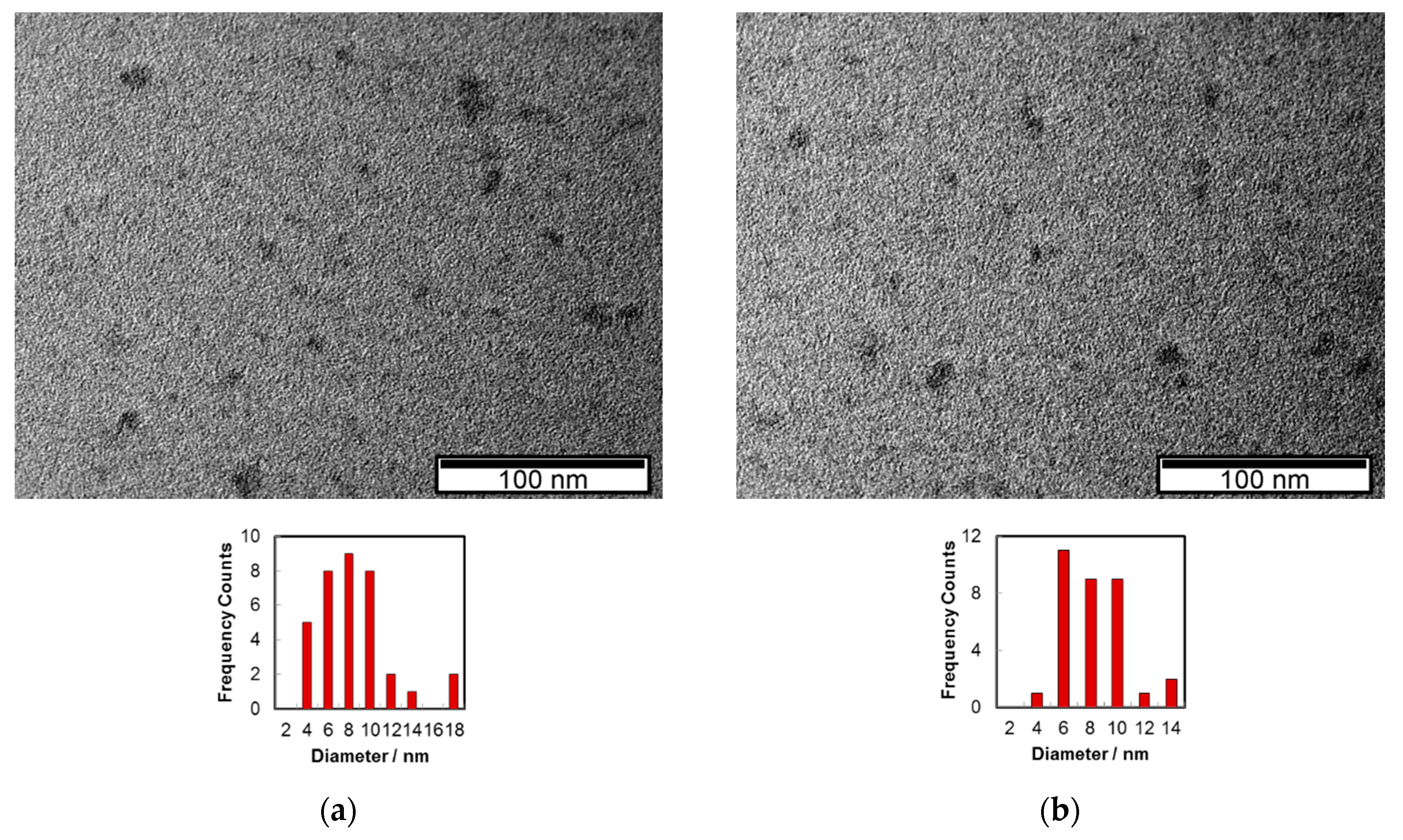
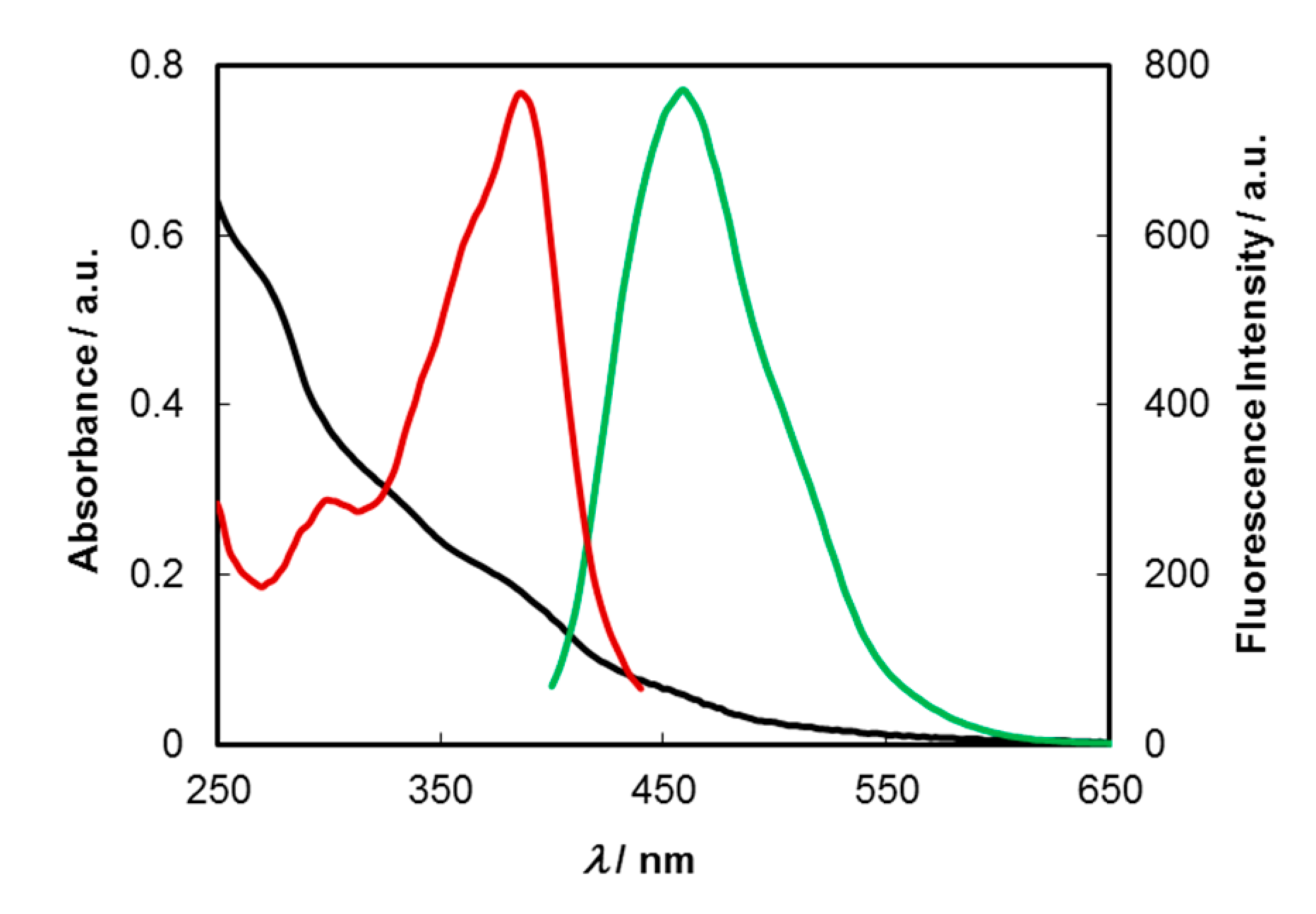
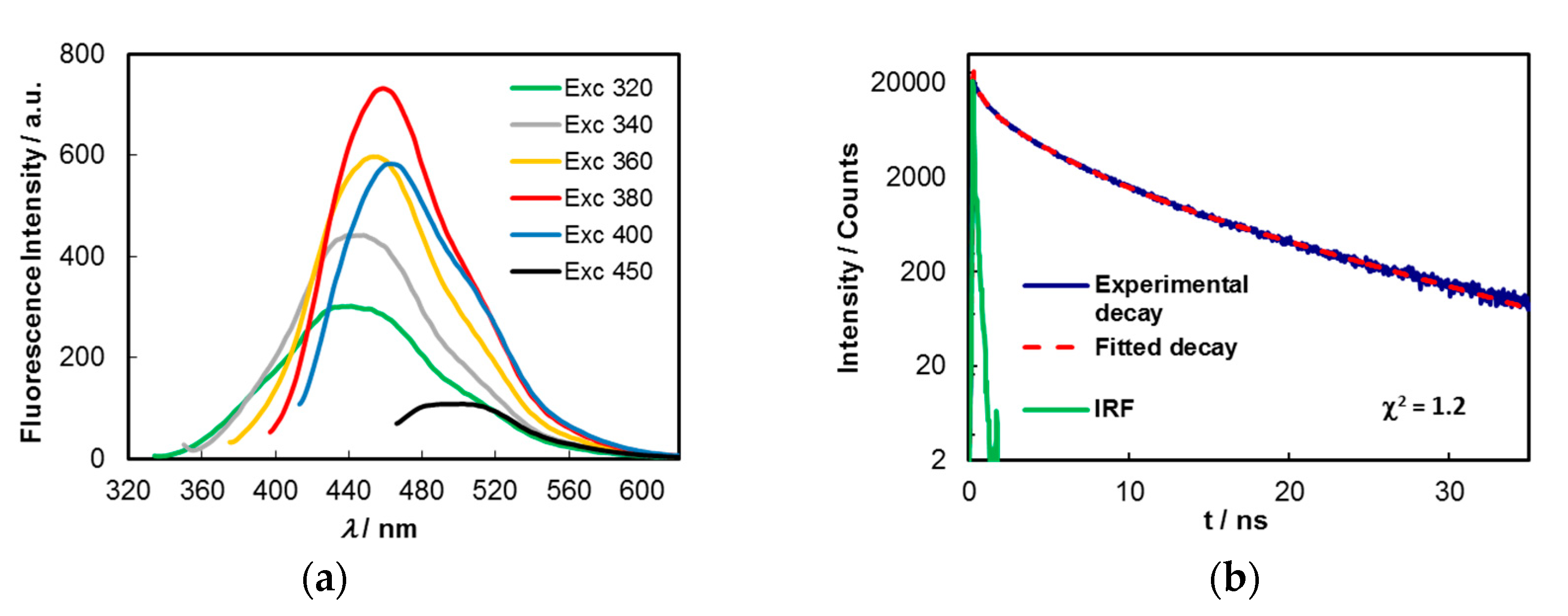

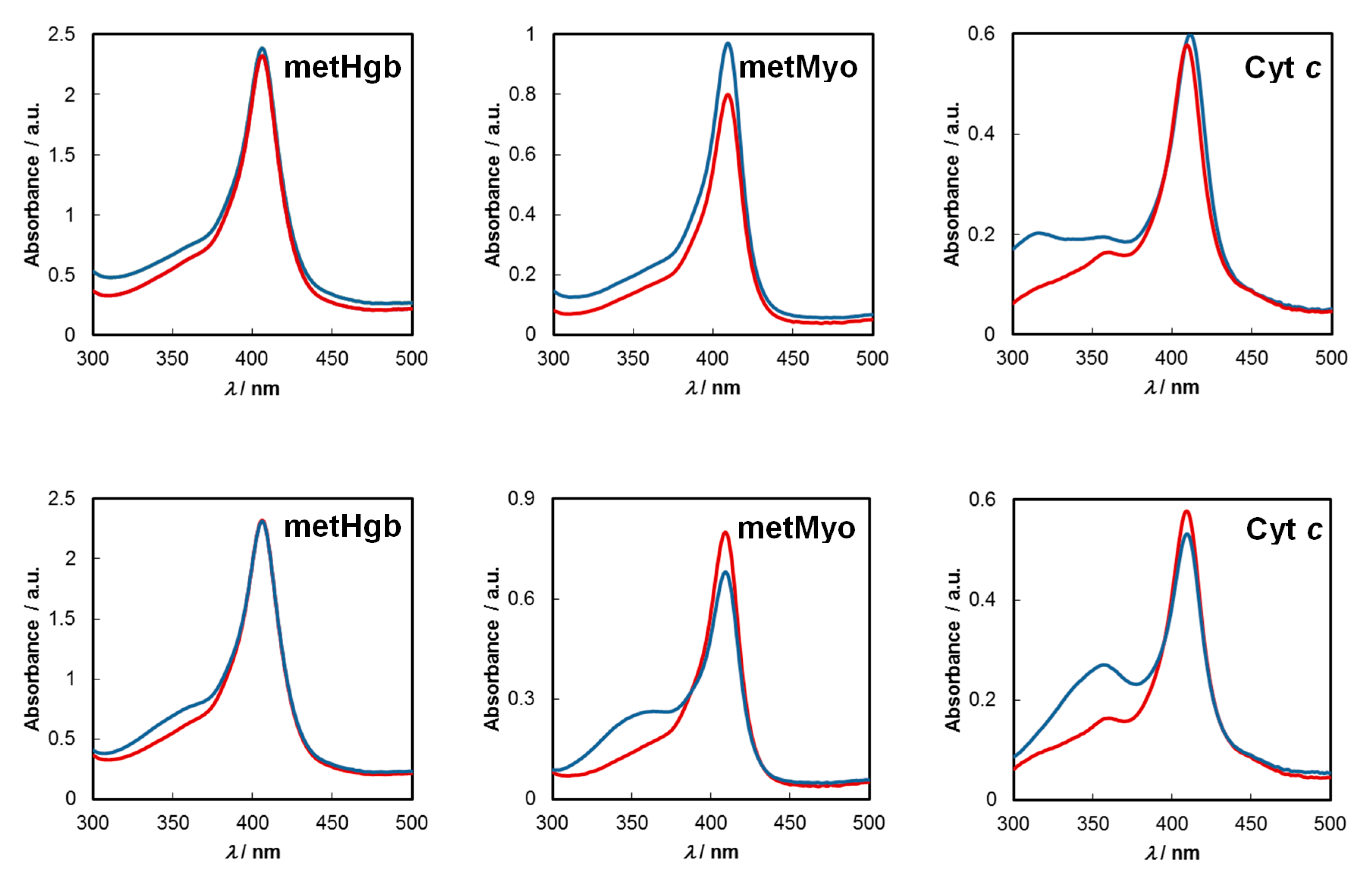

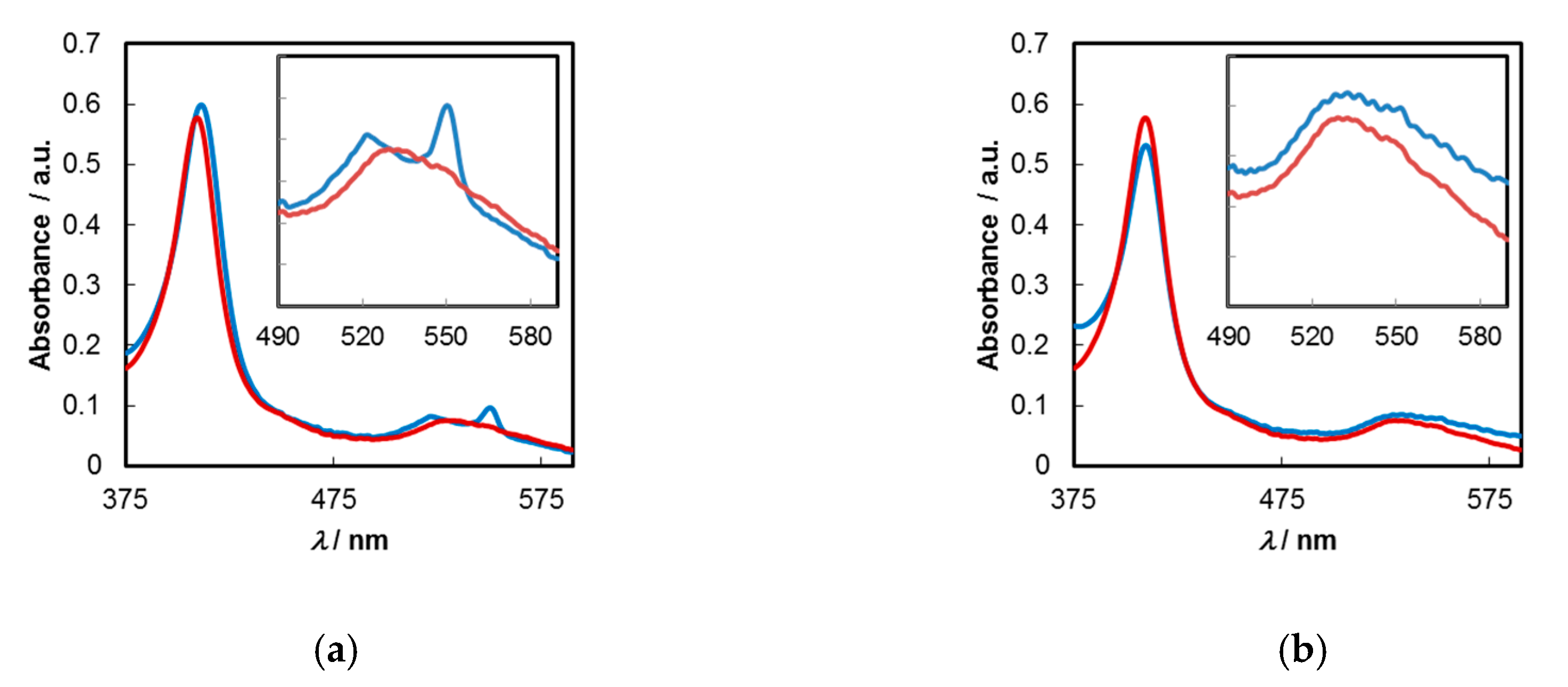
| pH | metHgb | Cyt c |
|---|---|---|
| KSV/M−1 (R2) | KSV/M−1 (R2) | |
| 5.0 | 7.4 × 105 (0.992) | 1.0 × 105 (0.991) |
| 7.2 | 6.1 × 105 (0.993) | 1.0 × 105 (0.998) |
| 9.1 | 5.2 × 105 (0.996) | 1.0 × 105 (0.977) |
© 2020 by the authors. Licensee MDPI, Basel, Switzerland. This article is an open access article distributed under the terms and conditions of the Creative Commons Attribution (CC BY) license (http://creativecommons.org/licenses/by/4.0/).
Share and Cite
Alexandre, M.R.; Costa, A.I.; Berberan-Santos, M.N.; Prata, J.V. Finding Value in Wastewaters from the Cork Industry: Carbon Dots Synthesis and Fluorescence for Hemeprotein Detection. Molecules 2020, 25, 2320. https://doi.org/10.3390/molecules25102320
Alexandre MR, Costa AI, Berberan-Santos MN, Prata JV. Finding Value in Wastewaters from the Cork Industry: Carbon Dots Synthesis and Fluorescence for Hemeprotein Detection. Molecules. 2020; 25(10):2320. https://doi.org/10.3390/molecules25102320
Chicago/Turabian StyleAlexandre, Marta R., Alexandra I. Costa, Mário N. Berberan-Santos, and José V. Prata. 2020. "Finding Value in Wastewaters from the Cork Industry: Carbon Dots Synthesis and Fluorescence for Hemeprotein Detection" Molecules 25, no. 10: 2320. https://doi.org/10.3390/molecules25102320







